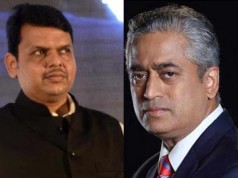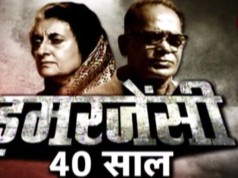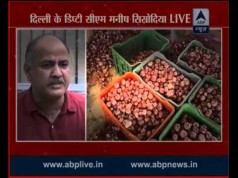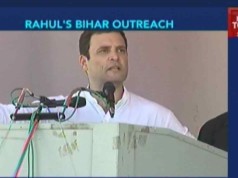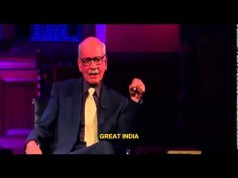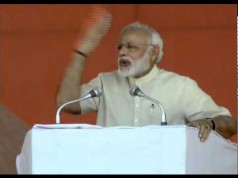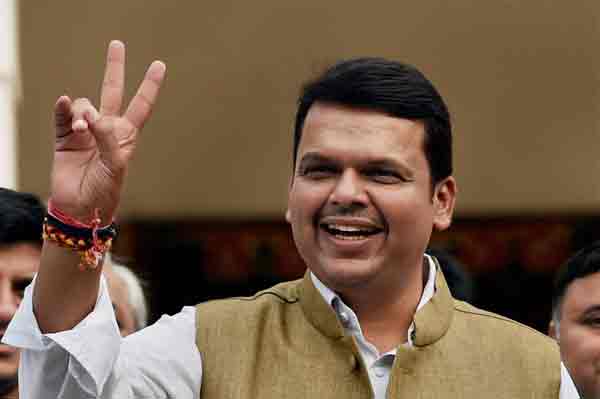The million dollar question is: whether Bharatiya Janata Party (BJP) prime ministerial candidate Narendra Modi will be able to cash his personal popularity as votes for the saffron party.
At present, things are going in the Hindutva icon’s favour, especially the fact that the rallies have been packed with youth — a key constituency in this elections.
The Assembly election in Chhattisgarh, Madhya Pradesh, Rajasthan, Delhi and Mizoram is a litmus test for Modi as he wants to legitimise his pre-eminence in national scene before the final battle later in April-May next year.
The TimesNOW C-Voter poll has predicted that Raman Singh-led BJP government will manage to cross the halfway mark by one seat (46), but the Congress is within touching distance, notching up 41 seats in Chhattisgarh.
As per the data, Raman Singh is clearly the most popular CM candidate, with 47% of those surveyed wanting him to be elected for a third consecutive term. Senior Congress leader Ajit Jogi stands a distant second with 20%.
The Election Commission has decided to hold polls in Chhattisgarh in two phases. Amid tight security, 18 constituencies in the Naxal strongholds of Bastar and Rajnandgaon went to polls on Monday in the state, marking the beginning of the battle of the ballot in five states. The voting for the remaining 72 constituencies in the state will take place on November 19.
BJP vs Congress
The saffron party is still counting on the ‘clean’ image of Chief Minister Raman Singh to see it through. The Congress party is a divided house in the state and missing a prominent face. Political observers are of the view that factionalism has been the bane of the Congress for long. The party is again banking on former Chief Minister Ajit Jogi and his son Amit Jogi’s capacity to give a jolt to the ruling party.
The BJP has very high stakes in the first phase because it holds 15 of the 18 seats, including 11 of the 12 in Bastar, once a Congress stronghold. So far, the ruling party’s strength lay in the overwhelming Other Backward Classes (OBCs) support it enjoyed, but the Pichda Varg Kalyan Manch, an apolitical front of the OBCs formed in 2012, is threatening that vote bank.
The Naxalite attack of May 25 this year led to the death of 27 persons, including former Union minister VC Shukla and senior state Congress leaders Mahendra Karma and Nand Kumar Patel. The Congress had hoped to generate a sympathy wave in its favour, but it has failed in this effort so far.
Big Fights
Known as Chhattisgarh’s ‘Chawal Baba’ (Rice Messiah), Raman Singh is in the fray from Rajnandgaon constituency. The main players in the Congress are MP from Korba Charan Das Mahant, powerful yet controversial Ajit Jogi and senior leader Motilal Vora.
The Chief Minister’s main rival is Congress’ Alka Mudliyar, wife of killed Congress leader Uday Mudliyar. Raman Singh had defeated Uday Mudliyar with a margin of 32,389 votes in the last election.
In 2008, Tribal Welfare Minister Kedar Kashyap defeated his nearest Congress rival Rajnuram Netam from Narayanpur seat by a huge margin of 21,635 votes. This time, the Congress has fielded a low-profile party worker, Chandan Kashyap, from this seat to take on Kashyap.
Sports Minister Lata Usendi had previously defeated Congress candidate Mohan Markam from Kondagon seat in a close contest by 2,771 votes. Markam has been provided a second chance from this seat.
The Congress gave a ticket to Amit Jogi – Ajit Jogi’s son – to contest from Marwahi constituency in Bilaspur district. Ajit Jogi’s wife, Renu – an MLA from Kota in Bilaspur – was also given a ticket from the same constituency.
Party insiders say Ajit Jogi is campaigning whole-heartedly after Congress vice-president Rahul Gandhi convinced him his interests would be protected, without actually yielding to his demands. The tribal leader was in a rebellious mood earlier as his detractors were being promoted and even the high command gave indications that the former Chief Minister didn’t figure in the party’s scheme of things.
Know the Chief Minister
Born to an advocate father and a homemaker mother, Raman Singh grew up in various towns in Chhattisgarh. He studied science in a government college outside Raipur, and then became an Ayurveda doctor.
He was elected municipal councillor from Kawardha in 1983. He also represented the town in the Assembly from 1990 to 1998. In 1999, he was elected to the Lok Sabha from Rajnandgaon, defeating veteran Congress leader Motilal Vohra, and was appointed minister of state for commerce and industries in the Atal Bihari Vajpayee government at the Centre.
In 2003, Singh was chosen as the Chief Minister at the last moment after former Union minister Dilip Singh Judeo was caught on camera in a cash scam just weeks before the elections.
Key Issues
The Congress is focusing on the alleged mismanagement of the state’s Public Distribution Scheme (PDS) and the challenge posed by Naxal menace, but the response to these issues seems to be lukewarm at present.
According to a survey by ABP News in collaboration with Dainik Bhaskar, rising food prices and a perception that the Grand Old Party had failed to control inflation had pushed voters towards the BJP.
The survey also showed that about three-fourths of the respondents rated Raman Singh’s performance as ‘good’ or ‘very good’, and 70% wanted his government to return. Most respondents were aware of the state’s food security law and 82% said they had either personally benefited or knew of beneficiaries of the Chief Minister’s health insurance scheme.
Bouquets
Raman Singh, 61, is the face of the reformed PDS and he is still banking on it despite the anti-incumbency factor against several MLAs and a few ministers in his council. The Chhattisgarh government not only provides 35 kilograms of rice at Re. 1 (to the poorest of the poor families) and at Rs. 2 per kg to priority households, but also provides discounted pulses/grams and free salt as part of the nutrition package in his near-universal programme.
The food scheme has earned kudos from Jean Dreze and Aruna Roy, former members of Sonia Gandhi’s National Advisory Council. In 2012, Singh got a food security act passed in the Assembly enshrining his subsidised food scheme into law.
Brickbats
Addressing a rally at Kondangaon, United Progressive Alliance (UPA) chairperson Sonia Gandhi claimed the poverty has increased in the rural areas of the state in the past 10 years. According to Mint claim check, the Congress chief is wrong. Quoting National Sample Survey Organization, Planning Commission, figures the newspaper reported that in 2011-12, 39.93% of the population in the state was poor, lower than that in 2004-05 (49.4%) and 2009-10 (48.7%).
Urban poverty went up marginally between 2009-10 (23.8%) and 2011-12 (24.75%). Rural poverty increased slightly between 2004-05 (55.1%) and 2009-10 (56.1%) but declined sharply to 44.6% in 2011-12.
Facts
Among the 143 candidates contesting the 18 seats in the first phase of the elections, the average of assets owned by each is Rs 57.8 lakh. And, 25 of the 143 are crorepatis, according to a report of the Association for Democratic Reforms and Chhattisgarh Election Watch.
The report is an outcome of the analysis of self-sworn affidavits of the 143. It analyses the criminal, financial, educational and other details of the candidates.
Fifteen of the 143 have criminal charges registered against them. Of these, six face serious ones such as murder, kidnap, criminal intimidation and crimes against women.
Chhattisgarh has a total of 1,67,96,174 electors and 21,418 polling booths have been set up to elect the 90-member state assembly. While 10 seats are reserved for Scheduled Castes, another 29 are reserved for Scheduled Tribes.
Between 2008 and October 2013, 559 security personnel and 628 civilians were killed in Naxal violence in the state. During the same period, security personnel killed 366 Naxalites. The red rebels have a presence in 16 of the state’s 27 districts.
The background
Around 71% of the 25.5 million people in the state are literate. Out of the 90 MLAs chosen in 2008, 11 MLAs had criminal cases against them. In 2008, Ajit Jogi defeated his closest rival by 42,092 votes while Raman Singh’s victory margin was 32,389 votes.
Resources
Considered the rice bowl of central India, Chhattisgarh is almost as mineral-rich as Jharkhand with a diamond mine spread over 18,000 square metre in Deobhog near Raipur, a sprawling iron mine at Bailadilah and Rawghat in Bastar, Bauxite mine at Kanker and huge coal deposits at the Bilaspur-Raigarh region which has already attracted steel plants.
The lowdown
Raman Singh believes he will repeat his 2008 performance riding on the success of his welfare schemes. The state’s anti-Maoist policy and discontent among the tribals are the major issues in the state.
(The article was written by Shantanu Bhattacharji and first published on Business Standard. Views expressed by the author are personal. PollUpdates.com does not hold responsibility for the article in any way.)


